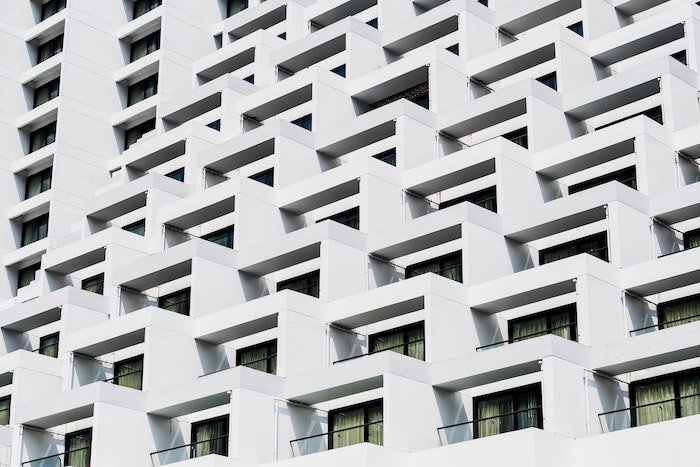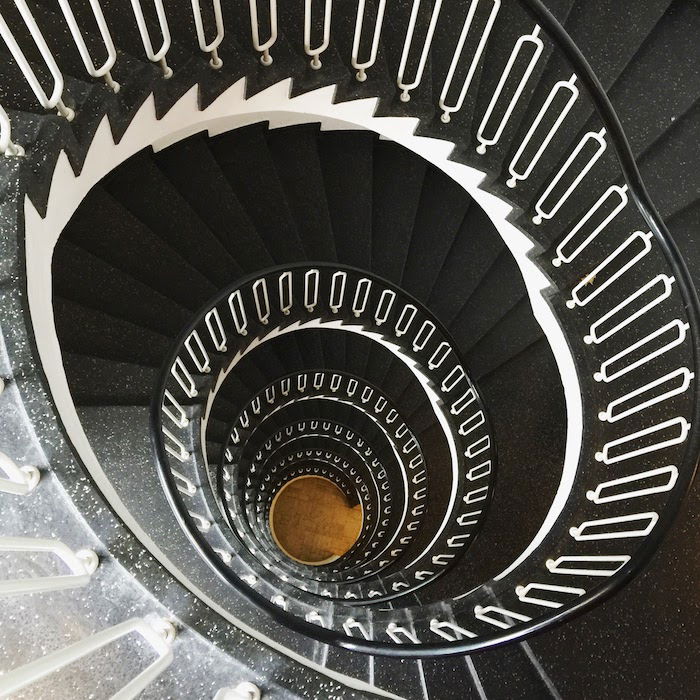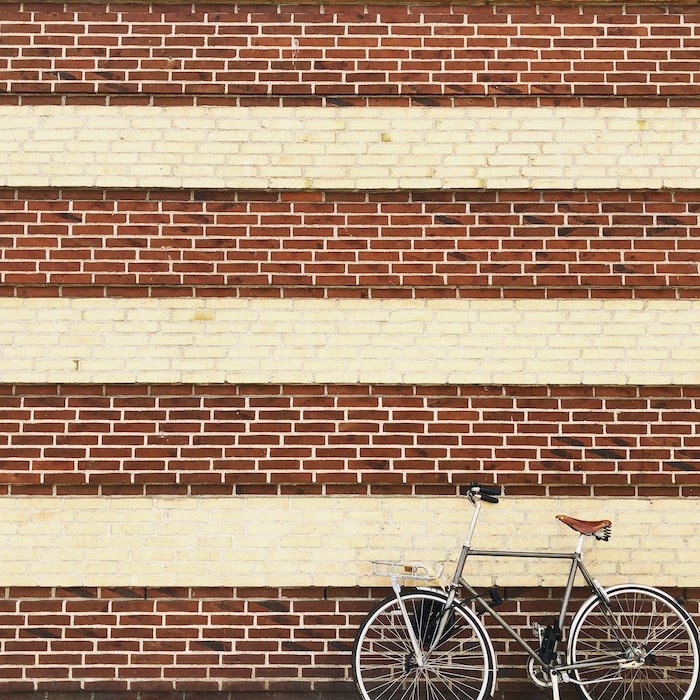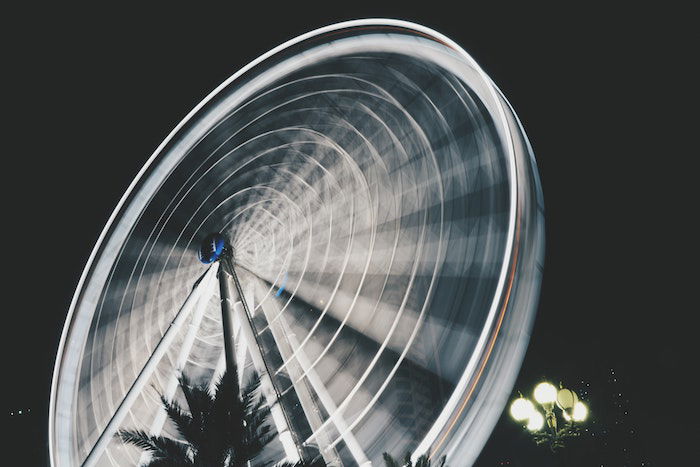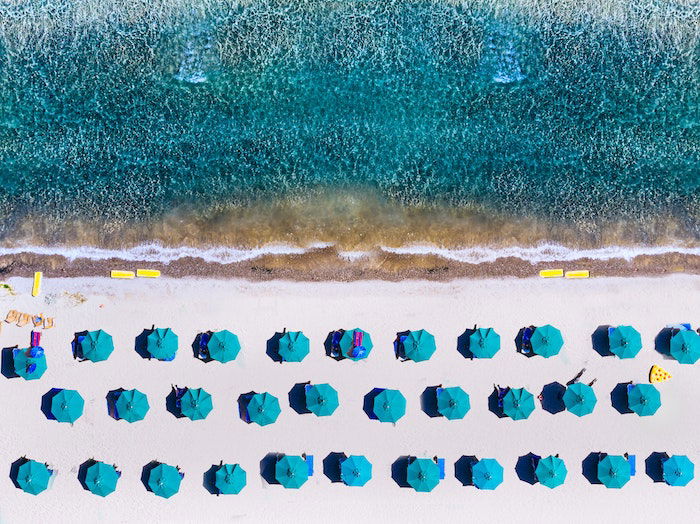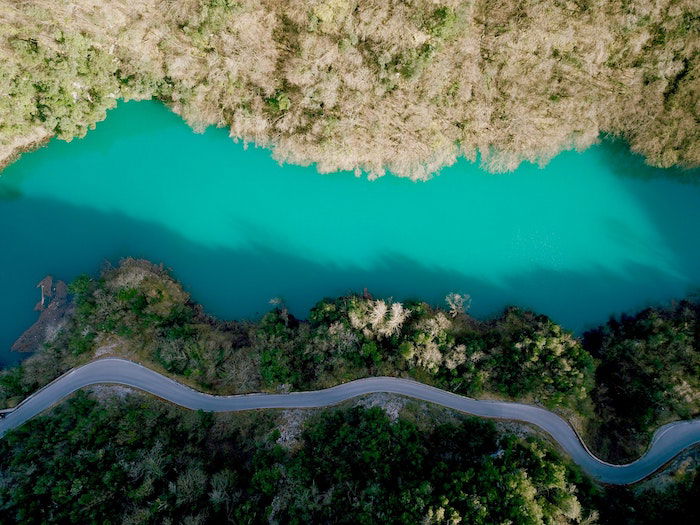Photography takes the three-dimensional world and puts it onto a two-dimensional surface. Through this process, we can see shapes and forms in different ways. We create rhythms and patterns from the world around us. An effective way of doing this is through the use of repetition. It can be the repetition of color, pattern, scale, or form.
1. Repetition In Photography: Zooming In To Create Abstract Scenes
If you look around in most places, you will likely see repetition:
blades of grass tiles on the floor apartment buildings landscape details, etc.
These are all usually found in the company of another in the same form. By zooming into these elements, you can capture a simple pattern emphasised by the photographic composition you choose to take. You can photograph these patterns either straight on or at an angle. Each method will provide a unique look at the subject you direct your lens at. The absence of any other form will make the photo more successful. So it is best to have a long lens for this composition technique. That way, you create an abstract look at the world and take the objects you focus on out of context. This can be fun to experiment with and can give you a newfound appreciation for your environment.
2. Use an Element to Break Repeating Patterns
Once you have found these patterns, it can be fun to go against the grain and introduce a new element into the frame. Think of a hot air balloon amongst the clouds or a frog poking its head out of a pond filled with cress. This composition technique will add special focus to the subject. This method is excellent when photographing portraits or models for a fashion shoot. If you choose your location carefully, you will put your model in an entirely new setting. This aesthetic can give the impression of a new world—a place where only your model exists. Again, it will most likely be easier to achieve this effect with a long focal length lens. Doing this keeps any unwanted elements out of your picture.
3. Find Patterns in Repetition of Colors
Trying to find repetitions in forms can be easy. When looking for repetition in color, it is a bit trickier. You can notice situations where the same color repeats in different subjects. This is something to look out for in street photography. Maybe a person is wearing the same color t-shirt as a car? And behind them is a poster or advertisement in the same color as the previous two. You don’t have to look out for the same color. Finding repetition in a series of colors is tricky but can be visually pleasing. It is most successful when dealing with complementary colors, gradients, or repetition of two or more particular colors. Pretend you are Mattise and see if you can split the colors into forms. The repetition will help you, but the composition is where the success of the images will be, and that’s up to you!
4. Uncover Repetition in the Rhythm of the World
Sometimes a repeated process or action can produce interesting effects. I’m sure everyone knows the pattern of rings that rainfall causes on a puddle. I’m sure most people have seen cars speeding down a motorway. To capture this repetition, one can take that action and make something new out of it. By studying these elements, you can uncover repetitive patterns and rhythms. Use photography to freeze or lengthen time. The freezing of water droplets can show geometric, swaying patterns. Long exposures of planes taking off at an airport create light trails that disappear into the sky. Finding these hidden patterns in repeated actions and photographing them in a way that creates a new image can be a lot of fun. The more creative you get, the more you will get out of the photos.
5. Use Repeating, Multiple Patterns in One Image
If you think in the context of patterns, you will often find two or more repeated in the same environment. For example, it could be a fence in front of a brick wall or umbrellas on a beach and the sea’s waves. To place these two repeating elements together, in contrast, can create some stunning imagery. This type of image can be challenging to get right. It all depends on what composition technique you use when you have identified these two or more elements. I would suggest trying to find a way that only shows the repeating elements. If there are other subjects in the photo, it can be hard for the viewer to identify the patterns, and the picture can lose its charm.
6. Find Repeating Elements Cutting Through Chaos
Another great photographic technique is to find a consistent pattern in a busy scene. Think of a pipe scaling up the side of a graffitied building or a mountain range cutting through a desolate landscape. If photographed right, you bring special attention to the subject you are focusing on. This focus can make the ordinary seem unique. You will also notice that this can provide a step back from reality. Your attention will pick up on aspects you could miss in real life, such as the similarities between different patterns in nature.
Conclusion
Repetition is everywhere. Learning how to photograph it can help you capture some excellent images. Attention to detail will be the difference between success and an average photo. The best way to refine your skills is to get out and practise! Look for original ways to approach your subject, and the more you will get out of it. You can apply these composition techniques to a range of different photography sub-genres. Use repetition in photography as a basic concept to build on. So whether you’re a portrait photographer or a photograph still life, you can find a way to experiment within your niche. Are you looking for a practical photography guide that fits in your pocket? Check out our fun Shuffle & Shoot Cards, a fun and easy way to learn 52 key photography concepts.
